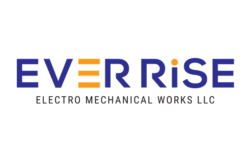Mechanical, Electrical, and Plumbing (MEP) contracting plays a crucial role in the UAE’s booming construction industry. With rapid urbanization and large-scale infrastructure projects, MEP contractors face unique challenges that can impact project timelines, budgets, and overall efficiency. This article explores the most common challenges in MEP contracting in the UAE and provides effective strategies to overcome them.
1. Regulatory Compliance and Permits
Challenge:
The UAE has stringent regulations governing MEP installations, including DEWA (Dubai Electricity and Water Authority), ADM (Abu Dhabi Municipality), and other regional authorities. Obtaining approvals and ensuring compliance with local codes can be time-consuming and complex.
Solution:
Stay updated with the latest regulatory changes and requirements.
Partner with consultants who specialize in local compliance.
Plan ahead to secure permits and approvals well in advance to avoid project delays.
2. Skilled Workforce Shortage
Challenge:
The MEP sector often faces a shortage of skilled labor, as specialized expertise is required for HVAC systems, electrical installations, and plumbing networks.
Solution:
Invest in training programs and upskilling existing employees.
Collaborate with vocational institutions to recruit and train fresh talent.
Leverage technology, such as Building Information Modeling (BIM), to reduce reliance on manual labor.
3. Project Delays and Cost Overruns
Challenge:
Unforeseen site conditions, design changes, and material shortages frequently lead to delays and increased costs.
Solution:
Implement robust project management tools to track progress and anticipate issues.
Adopt prefabrication techniques to minimize on-site labor and reduce wastage.
Work closely with suppliers to ensure timely material delivery and mitigate supply chain disruptions.
4. Coordination with Other Contractors
Challenge:
MEP contractors must work alongside civil and structural engineers, architects, and other specialists, leading to coordination challenges.
Solution:
Utilize BIM for seamless collaboration and clash detection before installation begins.
Establish clear communication protocols between all stakeholders.
Conduct regular coordination meetings to ensure alignment on project goals.
5. Heat and Environmental Factors
Challenge:
Extreme temperatures and humidity in the UAE can impact the performance of MEP systems, particularly HVAC and electrical components.
Solution:
Use materials and equipment designed for high-temperature conditions.
Incorporate energy-efficient systems to reduce strain on equipment.
Regular maintenance and inspection schedules to prevent system failures due to heat exposure.
6. Energy Efficiency and Sustainability
Challenge:
With a growing emphasis on green building practices, MEP contractors must integrate sustainable solutions while maintaining cost-effectiveness.
Solution:
Adopt energy-efficient HVAC and lighting solutions.
Implement water-saving plumbing fixtures.
Explore renewable energy sources such as solar panels and smart automation systems.
Conclusion
MEP contracting in the UAE presents various challenges, but with strategic planning, advanced technologies, and proactive problem-solving, contractors can successfully navigate these obstacles. By focusing on compliance, workforce development, coordination, and sustainability, MEP firms can ensure project success and contribute to the UAE’s dynamic construction landscape.
